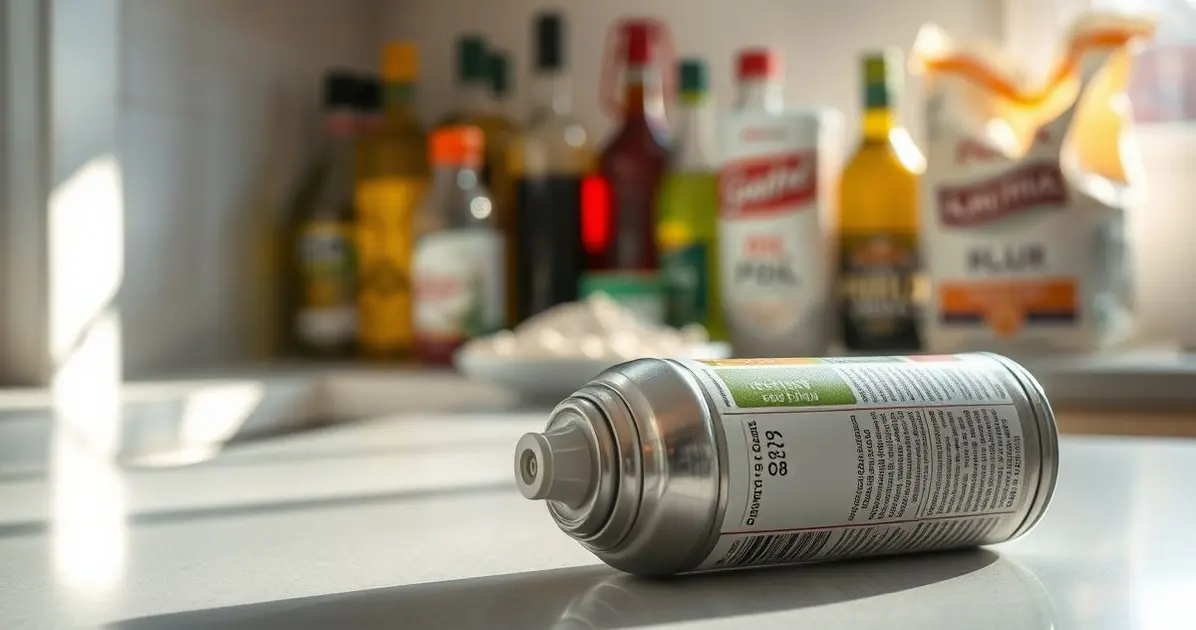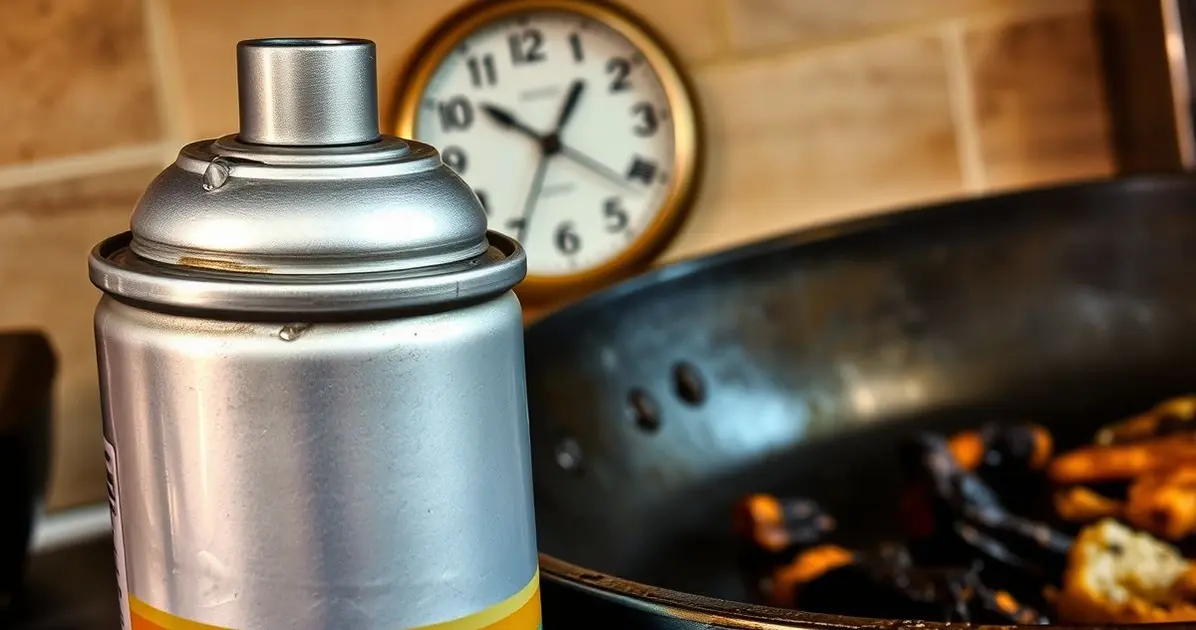Cooking spray is a common kitchen staple, but can it go bad? Understanding the shelf life and storage conditions can help you make the most of this handy product. Let’s explore the factors that influence cooking spray durability.
Can cooking spray go bad

Cooking spray can have a long shelf life, but it can go bad over time due to factors like exposure to air, light, and heat. It’s essential to check for changes in smell, color, or consistency before using. Keeping it stored properly can extend its freshness.
Understanding the Shelf Life of Cooking Spray
Understanding the shelf life of cooking spray is essential for ensuring that you use it effectively and safely in your culinary endeavors. While cooking spray is a convenient kitchen staple, it does have a limited lifespan due to various factors.
1. Shelf Life of Unopened Cooking Spray: Unopened cans of cooking spray can typically last for up to two years when stored properly. This extended shelf life is due to the sealed environment of the can, which protects the contents from air and light exposure that can lead to degradation.
2. Shelf Life of Opened Cooking Spray: Once opened, cooking spray is best used within six months to a year. After this period, the effectiveness of the spray may diminish, and the flavor may not be as fresh. The exposure to air and light once the can is opened contributes to this shorter shelf life.
3. Factors Affecting Shelf Life: Several factors can influence the shelf life of cooking spray, including:
- Type of Oil Used: Different oils have varying levels of stability. For example, sprays with oils that have a higher smoke point may last longer than those made with oils that are more prone to oxidation.
- Storage Conditions: Cooking spray should be stored in a cool, dark place. Exposure to heat and direct sunlight can accelerate the degradation process, leading to spoilage.
- Can Integrity: If the can is damaged or compromised, it can lead to contamination and spoilage of the contents.
In conclusion, understanding the shelf life of cooking spray is crucial for maintaining its quality and effectiveness in the kitchen. By being aware of the differences between unopened and opened cans, as well as the factors that can affect shelf life, you can make informed decisions about when to use or replace your cooking spray.
Factors Affecting the Longevity of Cooking Spray
The longevity of cooking spray can be influenced by several factors that affect its quality and effectiveness over time. Understanding these factors can help you maximize the shelf life of your cooking spray and ensure it remains safe to use.
1. Type of Oil Used: Different cooking sprays are made with various types of oils, each having its own stability and shelf life. Oils with higher smoke points, such as canola or avocado oil, tend to be more stable and may last longer than oils with lower smoke points, like olive oil. The composition of the oil can impact how quickly it degrades.
2. Storage Conditions: Proper storage is crucial for maintaining the quality of cooking spray. Cooking spray should be kept in a cool, dark place, away from direct sunlight and heat sources. Exposure to heat and light can accelerate the degradation of the oil, leading to spoilage and loss of effectiveness.
3. Can Integrity: The integrity of the can is vital for the longevity of cooking spray. If the can is damaged, dented, or compromised in any way, it can lead to air or moisture entering the can, which can promote oxidation and spoilage of the contents. Always inspect the can before use.
4. Frequency of Use: The more frequently a cooking spray is used, the more exposure it has to air and light, which can contribute to its degradation. If you use a can of cooking spray regularly, it may have a shorter shelf life than one that is rarely opened.
5. Expiration Date: Always check the expiration date on the can. While cooking spray may still be usable past this date, its quality and effectiveness may diminish. It’s a good practice to adhere to the expiration date as a guideline for freshness.
In summary, several factors can affect the longevity of cooking spray, including the type of oil used, storage conditions, can integrity, frequency of use, and expiration date. By being mindful of these factors, you can ensure that your cooking spray remains effective and safe to use in your kitchen.

Signs of Spoilage in Cooking Spray
Recognizing the signs of spoilage in cooking spray is essential to ensure safety and maintain the quality of your culinary creations. Here are the key indicators that your cooking spray may have gone bad:
1. Off-Putting Odor: One of the most noticeable signs of spoilage is a rancid or unpleasant smell. Fresh cooking spray should have a neutral or pleasant aroma. If you detect a strong, off-putting odor when you spray it, it’s a clear indication that the oil has degraded and should not be used.
2. Change in Texture: Cooking spray should have a smooth, consistent texture. If it appears chunky, separated, or has an unusual consistency, it may indicate spoilage. An oily residue that doesn’t disperse properly can also be a sign that the spray is no longer good.
3. Color Changes: While cooking spray is often colorless or lightly tinted, any significant change in color can indicate degradation. If the spray has darkened or has developed an unusual hue compared to its original state, it’s best to err on the side of caution and discard it.
4. Residue Build-Up: If you notice excessive residue or build-up on the nozzle or inside the can, this could indicate that the oil has begun to break down. This build-up can lead to clogging and affect the spray’s functionality.
5. Expiration Date: Always check the expiration date on the can. If the cooking spray is past its expiration date, it’s advisable to dispose of it, even if it appears fine. The expiration date serves as a guideline for freshness and quality.
By being vigilant and recognizing these signs of spoilage, you can ensure that you are using high-quality cooking spray in your dishes, which helps maintain both flavor and safety in your cooking. If you notice any of these indicators, it’s best to err on the side of caution and dispose of the spray.
Tips for Properly Storing Cooking Spray
Proper storage of cooking spray is essential to maintain its quality and extend its shelf life. Here are some effective tips for storing cooking spray:
1. Store in a Cool, Dark Place: Keep your cooking spray in a cool, dark area away from direct sunlight and heat sources. A pantry or cupboard is ideal, as exposure to light and heat can accelerate degradation and spoilage.
2. Keep the Cap Tightly Sealed: Always ensure that the cap is securely closed after each use. This minimizes exposure to air, which can lead to oxidation and a decrease in the quality of the oil.
3. Avoid Extreme Temperatures: Cooking spray should not be stored in areas that experience extreme temperature fluctuations, such as near the stove or oven. High temperatures can cause the oil to degrade more quickly.
4. Check the Can for Damage: Regularly inspect the can for any signs of damage, such as dents or leaks. A compromised can may allow air or moisture to enter, leading to spoilage of the contents.
5. Label and Date Your Cooking Spray: If you have multiple cans of cooking spray, consider labeling them with the purchase or opening date. This will help you keep track of freshness and ensure that you use the oldest cans first.
6. Use Within Recommended Timeframes: Be mindful of the recommended usage timeframes. Unopened cooking spray can last up to two years, while opened cans are best used within six months to a year. Always prioritize using the spray before these timeframes to ensure quality.
By following these tips for properly storing cooking spray, you can ensure that it remains effective and safe to use in your kitchen, allowing you to enjoy its convenience without compromising on quality.
Conclusion
In conclusion, understanding the shelf life and proper storage of cooking spray is essential for maintaining its quality and effectiveness in the kitchen. While cooking spray is a convenient and versatile kitchen staple, it can degrade over time if not stored properly.
By recognizing the signs of spoilage, such as off-putting odors, changes in texture, and color variations, you can ensure that you are using fresh and safe cooking spray in your culinary creations.
Additionally, following proper storage tips—like keeping the spray in a cool, dark place, sealing it tightly, and regularly checking for damage—can significantly extend its shelf life.
Ultimately, being mindful of these factors will help you make the most of your cooking spray, allowing you to enjoy its benefits while minimizing waste. By taking the necessary precautions, you can ensure that your cooking spray remains a reliable and effective tool in your kitchen for all your culinary adventures.
FAQ – Frequently Asked Questions about Cooking Spray
Can cooking spray go bad?
Yes, while cooking spray doesn’t technically expire, it can degrade over time, leading to diminished effectiveness and flavor.
What is the shelf life of cooking spray?
Unopened cooking spray can last up to two years, while opened cans are best used within six months to a year.
How can I tell if my cooking spray has spoiled?
Signs of spoilage include off-putting smells, changes in texture, color variations, and excessive residue build-up.
How should I store cooking spray?
Store cooking spray in a cool, dark place away from direct sunlight and heat, and ensure the cap is tightly sealed after use.
What factors affect the longevity of cooking spray?
Factors include the type of oil used, storage conditions, can integrity, and frequency of use.
Is it safe to use expired cooking spray?
While it may still be usable, the quality and effectiveness may be diminished. It’s best to check for signs of spoilage before use.
See more
Discover plenty of easy and delicious recipes you can make at home, from hearty dinners to indulgent desserts and wholesome breakfasts.




